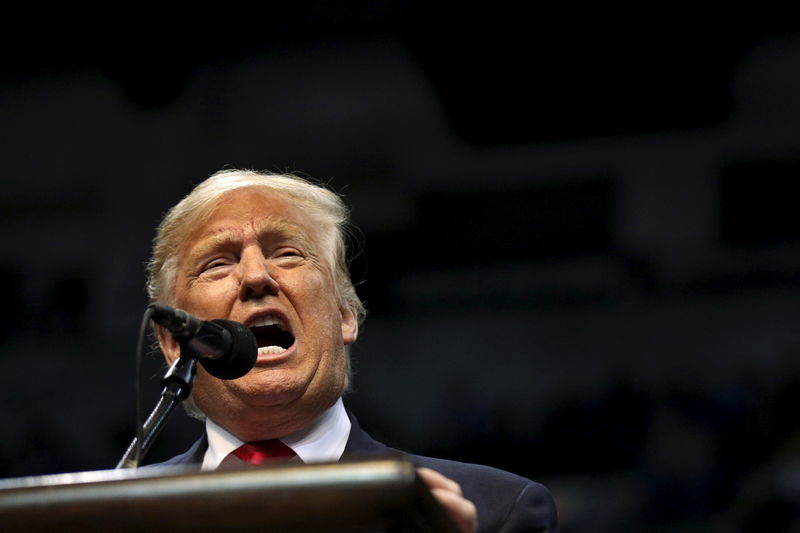(Bloomberg) -- A lot of investors seem to have lost the memo on the revival of the American steel industry.
U.S. President Donald Trump took to Twitter to boast about new plants amid robust demand. While he’s right that the industry is thriving, it’s also worth noting that gains in steel stocks since the U.S. announced import tariffs on the metal have trailed the broader market.
Donald J. Trump@realDonaldTrumpOur Steel Industry is the talk of the World. It has been given new life, and is thriving. Billions of Dollars is being spent on new plants all around the country!
Sent via Twitter for iPhone.
View original tweet.
Some U.S. plants have been restarted, and a Federal Reserve report showed steel and iron-ore output has risen for 15 straight months. But in a year in which tariffs have helped fuel a 32 percent surge in domestic steel prices, U.S. producers’ shares have struggled amid investor concerns over the demand outlook and a lack of confidence in the higher steel prices, said analysts including Phil Gibbs at Keybanc Capital Markets.
“People are fearful of global demand being hurt with all this trade friction with China, and fearful that input costs are rising at a very rapid pace,” Gibbs said by phone. “High prices can be good for short-term profits, but higher prices can also stymie demand. If that happens, steel being a global demand proxy is right in the crosshairs.”
The S&P Supercomposite Steel Index of 13 producers is down more than 8 percent since the levies were announced on March 1, compared with an 8 percent gain for the broader S&P 500 Index. The steelmaker gauge is little changed this year.
Trump has made blue-collar industries like coal and steel a centerpiece of his platform, promising a return to the days of rapid expansion in U.S. manufacturing. The S&P gauge of steelmaker shares is up more than 30 percent since Trump won the November 2016 election, compared with about 36 percent for the broader equity market.
In addition to gains on Trump’s promise for ‘‘bold action” to stem a flood of imports from China, the domestic industry has benefited the past few years from a resilient global economy and a series of anti-dumping measures handed down from the Obama administration. The S&P steelmakers gauge rose 71 percent in 2016.
“At the very least, the tweet is more right than wrong,” Jeremy Sussman, an analyst at Clarksons Platou Securities, said in a telephone interview from New York. “Steel imports are down, and prices are up. The spread between U.S. and the world steel prices is at a historical high level, which we believe is in large part due to the tariffs.”
Mixed Bag
Trump said in a separate tweet that tariffs have put the U.S. in “a very strong bargaining position,” with jobs and billions of dollars flowing to the U.S.
Still, a mixed bag of results last quarter left investors wondering if they would see any real benefit from Trump’s trade policies. While Pittsburgh-based U.S. Steel Corp. raised its 2018 earnings forecast on Aug. 1 after a better-than-expected second quarter, it gave a third-quarter projection that trailed the average analyst estimate, and kept dividends unchanged.
Morgan Stanley (NYSE:MS) downgraded U.S. Steel later last month, saying the steel market’s cycle peak is “now behind us.” U.S. Steel shares are down 36 percent since March 1, the worst performance in the S&P steelmakers index. AK Steel Holding Corp., Nucor Corp (NYSE:NUE). and TimkenSteel Corp. are also down in that span.
Other companies have fared better. Cleveland-Cliffs Inc., the top U.S. iron-ore producer, has surged about 50 percent since the tariffs were announced, while Allegheny Technologies (NYSE:ATI) Inc. is up more 7 than percent.
“The group as whole is generally up but are down from their recent peak, and I would argued that’s because hot-rolled steel pricing is now down from the peak,” Clarksons Platou’s Sussman said.
(Updates with analysts’ comments starting in third paragraph.)
